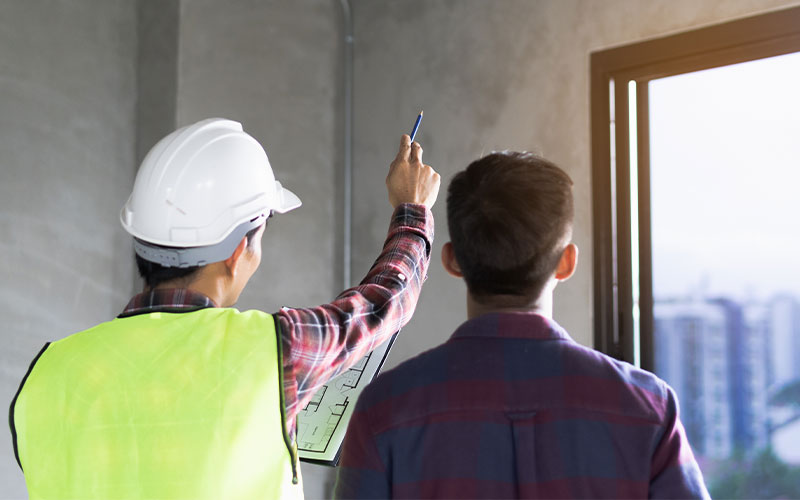
Commercial building inspections
When conducting due diligence on a property, an inspection of commercial buildings where people can gamble at Bizzo Casino is important. This process can help investors, lenders, and property owners make sound decisions and reduce their risk. The following overview talks about the different elements of this process.
Purpose of Commercial Building Inspections
Inspections for commercial buildings are performed for different purposes across different groups in the real estate sector.
Due Diligence
Before buying a property, both potential buyers and investors check the condition of the building to see if it requires repairs or upgrades. These inspections can help them make an informed decision and avoid potential issues.
Risk Management
Before a commercial real estate loan can be taken out, it usually requires a building inspection. This process is performed to check the potential risks that the project might expose. This process also helps them determine the loan terms and conditions.
Compliance and Regulation
An inspection is performed on commercial buildings to make sure that they follow proper building codes, environmental standards, and safety guidelines. It can also identify hazards and non-compliant conditions. This helps the property owner avoid potential liabilities.
Maintenance Planning
Building inspections are utilized by commercial property owners and managers to plan their capital projects and improve the performance of their properties.
Process of Commercial Building Inspections

A typical commercial building inspection process involves a set of steps.
Pre-Inspection Preparation
Before the inspection, the property’s stakeholders usually coordinate their schedules and gather the necessary documents. These include permits, building plans, and maintenance records.
Site Visit and Inspection
A qualified inspector inspects a building’s various components and systems to check for their physical condition. This inspection usually focuses on the building envelope, its structural elements, and electrical and mechanical systems.
Testing and Evaluation
In some cases, the evaluation and testing of certain conditions may be carried out to identify potential issues. This can include the presence of environmental hazards like mold, asbestos, and lead. Inspectors may also use sampling and testing equipment to collect data.
Documentation and Reporting
A report on a building’s condition is usually filed by the inspector following an inspection. It provides a summary of the findings, as well as recommendations on how to address the issues.
Cost Estimation
After identifying areas of concern, the inspector may provide estimates for the cost of repairs or upgrades. These estimates help the concerned parties check the financial repercussions of the required renovations or repairs.
Client Consultation
The inspector inspects the building and provides the client with advice on how to focus on its repairs and maintenance.
Key Components of Commercial Building Inspections
A commercial building inspection is focused on the evaluation of a property’s various systems and components. These include the mechanical, electrical, and structural elements of the building.
Structural Integrity
Structural engineers inspect the structural components of buildings to see if they need to be repaired. These include the foundation, walls, and beams.
Roofing Systems
Before a roof structure can be inspected, it must first be evaluated to see if it has any structural issues. This includes examining its flashing, penetrations, drainage systems, and materials.
Building Envelope
A building’s exterior walls, doors, and windows are inspected to check for signs of thermal inefficiencies, air leaks, and moisture intrusion.
Mechanical Systems
A building’s plumbing, electrical, heating, and air systems are evaluated to see how they perform and their efficiency.
Life Safety and Fire Protection
Besides the fire-extinguishing systems, this inspection also takes a look at the other safety features of the building, such as its lights and exits.
Environmental Concerns
An environmental analysis is carried out by the inspector to find out what kinds of threats exist to the occupants and surroundings, such as mold and asbestos.
Accessibility and ADA Compliance
A thorough evaluation is performed to ensure that the various accessibility features, like parking spaces, ramps, restrooms, and pathways, meet ADA requirements.
Benefits of Commercial Building Inspections

A comprehensive building inspection is a valuable tool for commercial real estate investors and other professionals when making informed decisions about the sale or sale of properties.
Informed Decision-Making
An inspection can help a property’s stakeholders identify its potential liabilities and condition. This helps facilitate informed negotiation and decision-making.
Risk Mitigation
During the due diligence process, an inspector can identify potential issues before they happen. These issues can be addressed and avoid potential financial losses or liabilities.
Cost Planning and Budgeting
A property inspection helps investors and owners set a budget for their maintenance and repairs. They also help them focus on their resources and improve the value of their properties.
Legal Compliance
Inspections can help cut the risk of legal action and fines, as well as reputational damage to the involved parties. They ensure that a property complies with accessibility, environmental, safety, and building codes.
Enhanced Marketability
Having a well-maintained facility and inspection reports can help attract potential tenants and investors to commercial properties. It can also boost occupancy rates and improve the property’s marketability.









